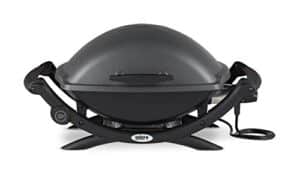Can You Convert A Natural Gas Grill To Propane?
Key Takeaways
- It is possible to convert a natural gas grill to propane
- The necessary tools for the conversion include a propane hose and regulator, a propane tank, an adjustable wrench, and a screwdriver
- Important steps in the conversion process include shutting off the gas supply, removing natural gas components, installing a propane regulator and hose, connecting the propane tank, testing the grill, performing a leak test, and following the manufacturer’s guidelines
Many grill enthusiasts often find themselves wondering if it is possible to convert a natural gas grill to propane. The answer is yes, it is indeed possible to make this conversion. Converting a natural gas grill to propane allows you to enjoy the benefits and convenience of using propane as a fuel source. In this article, we will explore the steps involved in converting a natural gas grill to propane, ensuring that you have all the necessary information to successfully make the switch.
1. Gather the Necessary Tools
The first step in converting a natural gas grill to propane is to gather the necessary tools. These tools include a propane hose and regulator, a propane tank, an adjustable wrench, and a screwdriver. Having these tools on hand will ensure that you are well-equipped to carry out the conversion process smoothly.
2. Shut Off the Gas Supply
Prior to starting the conversion, it is crucial to shut off the gas supply to the grill. This step is essential for safety reasons and should never be skipped. Make sure to locate the gas shut-off valve and turn it off before proceeding with the conversion process.
3. Remove Natural Gas Components
Next, you will need to remove the natural gas components from the grill. This includes the hose, regulator, and any orifices or valves specific to natural gas. By removing these components, you are preparing the grill to be compatible with propane fuel.
4. Install Propane Regulator and Hose
Once the natural gas components have been removed, it is time to install the propane regulator and hose onto the grill. Carefully follow the manufacturer’s instructions for installation and use an adjustable wrench to tighten the connections securely. This step is crucial for ensuring a safe and efficient conversion.
5. Connect the Propane Tank
After installing the propane regulator and hose, it is time to connect the propane tank to the grill. Ensure that the tank valve is closed before attaching it to the regulator. Open the valve on the propane tank slowly to allow the gas to flow into the grill.
6. Test the Grill
With the propane tank connected, it is time to test the grill. Turn on the burners and check if they ignite properly. Adjust the flame using the grill’s controls if necessary. It is essential to ensure that the grill is functioning correctly before proceeding further.
7. Perform a Leak Test
After testing the grill, it is crucial to perform a leak test. Apply a soap and water solution to the connections and check for any bubbles. If bubbles appear, it indicates a gas leak, and the connections should be tightened. A leak-free grill is essential for safe operation.
8. Follow Manufacturer’s Guidelines
Finally, it is important to follow any additional guidelines or recommendations from the manufacturer for safe use. Each grill may have specific instructions or precautions that need to be followed to ensure optimal performance and safety.
Converting a natural gas grill to propane provides the flexibility to use propane as a fuel source, allowing you to enjoy the benefits it offers. However, it is crucial to prioritize safety throughout the conversion process. Always consult the manufacturer’s instructions and exercise caution to ensure a successful and safe conversion.
Related Websites:
FAQs:
Q: Can you convert a natural gas grill to propane?
Yes, it is possible to convert a natural gas grill to propane. However, it is important to ensure compatibility between the grill and the fuel source. Converting a gas grill requires specific steps and precautions to be taken, so it is recommended to consult the manufacturer or a professional technician for assistance.
Q: What are the main differences between natural gas and propane?
Natural gas and propane differ in terms of their composition, energy content, and availability. Natural gas is composed mainly of methane and is supplied through a pipeline system, while propane is a byproduct of natural gas processing and is stored in tanks. Propane has a higher energy content than natural gas, making it a popular choice for outdoor grilling.
Q: What are the key components of a gas grill?
The key components of a gas grill include burners, regulator, hoses, valves, and ignition system. These components ensure the safe and efficient operation of the grill. When converting a gas grill from natural gas to propane, it is important to consider the compatibility of these components with the new fuel source.
Q: Are there any safety concerns when converting a gas grill?
Converting a gas grill involves working with flammable gases, so it is crucial to take safety precautions. It is recommended to follow manufacturer instructions or seek professional assistance to ensure proper installation and avoid potential hazards. Gas leaks, improper connections, and inadequate ventilation can pose safety risks.
Q: How can I find qualified professionals for assistance with grill conversions?
To find qualified professionals for grill conversions, you can start by contacting the manufacturer of your grill. They can provide guidance or recommend authorized service centers. Additionally, you may search for local technicians or grill specialists who are experienced with gas grill conversions. Reading reviews and seeking recommendations can also help in finding reliable professionals.






